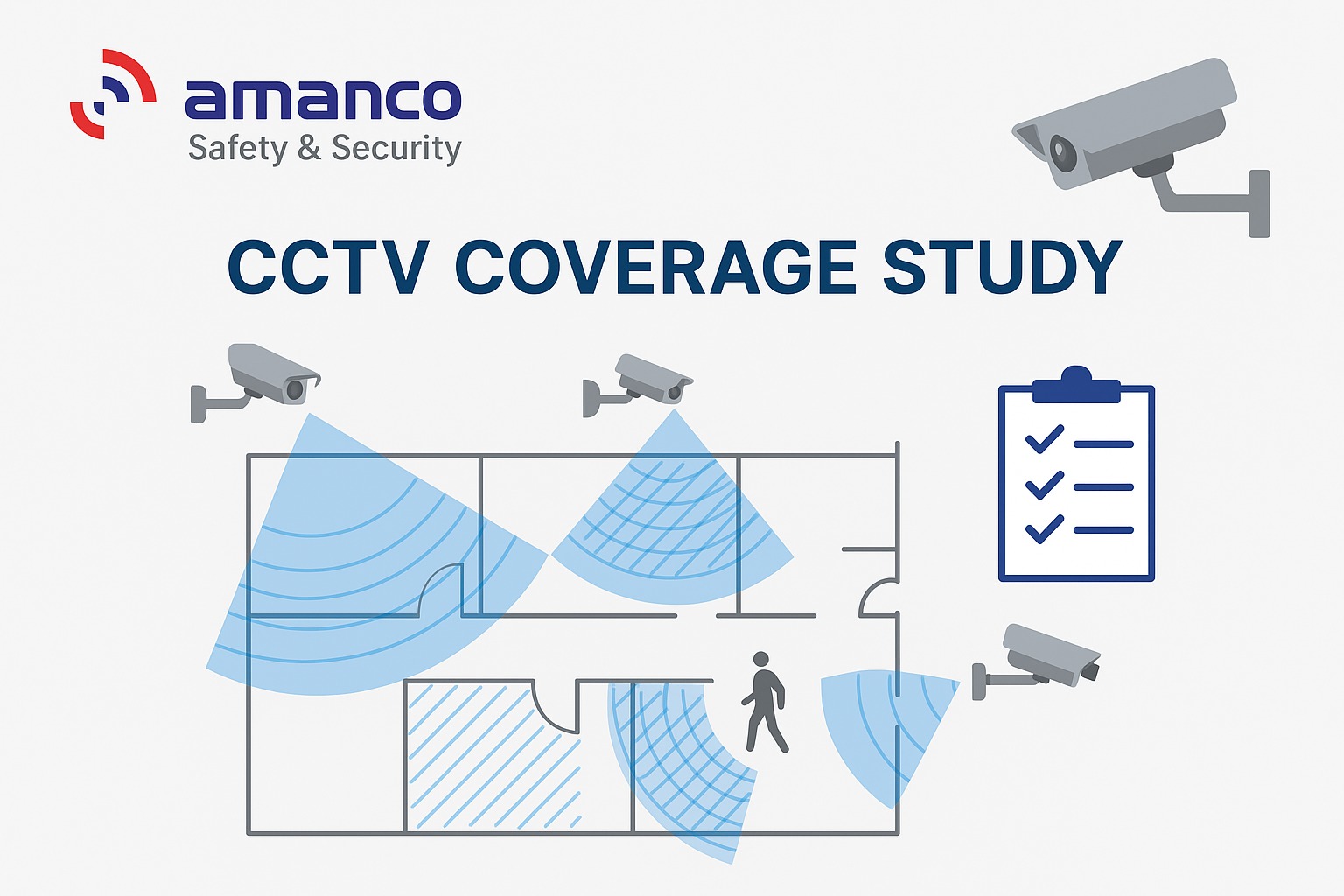CCTV Coverage Study, Security Camera Visibility
AMANCO - CCTV Coverage Study, Security Camera Visibility.

When it comes to protecting your property, having security cameras is just the beginning. What’s even more important is whether those cameras are placed in the right spots and capturing the areas they’re meant to cover. That’s exactly what a CCTV coverage study helps to determine.
Whether you’re managing a commercial building, a residential tower, a warehouse, or a healthcare facility, knowing how your CCTV system performs in real-world conditions is crucial. Blind spots, low visibility zones, or poorly angled cameras can make even the best camera systems ineffective when incidents occur.
A CCTV coverage study is a practical site-based assessment that examines how well your camera system monitors key areas. It looks at camera angles, field of view, lighting conditions, blind zones, distance effectiveness, and placement logic. The goal is to ensure every important area is monitored without gaps or overlaps.
This isn’t just about counting cameras — it’s about making sure they’re doing the job they’re installed for: capturing clear, useful footage when it’s needed the most.
It’s common to see facilities with dozens of cameras — yet still experience blind spots. Why?
Because in many cases, CCTV systems are installed based on general layouts or pre-made plans without considering:
A CCTV coverage study identifies all these issues with real-world testing, helping you fix weak points before they become liabilities.
At AMANCO, we carry out thorough on-site assessments that go beyond just checking footage. Here's what’s typically included:
After the study, we provide a detailed report that’s easy to understand — showing where your system is strong and where it needs improvement.
This type of study is valuable for both new and existing sites, including:
Even if your system was professionally installed, changes in environment or usage can affect performance. A coverage study makes sure your system adapts to real needs, not just blueprints.
You’re not just adding cameras — you’re making sure each one works where it matters.
Security isn’t just about having equipment in place — it’s about having the right setup. A CCTV coverage study helps you avoid the false sense of security that comes from simply installing cameras without testing their actual performance.
If you’re unsure whether your current CCTV system is doing its job, it might be time to schedule a professional coverage study. It’s a one-time step that can protect you from future risks.
To book a CCTV coverage assessment, or to learn more about how we help clients optimize their existing systems, get in touch with AMANCO (Aman Contracting Trading & Maintenance Co. Ltd). Our team will guide you through every step — from on-site analysis to actionable fixes.
Let’s make sure your cameras are watching the right places — not just the walls.